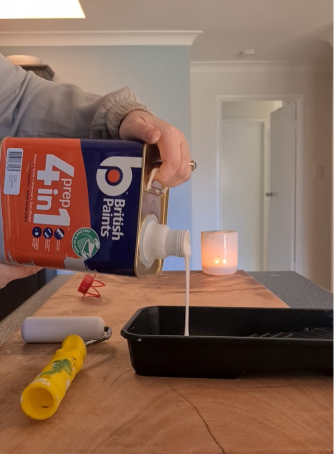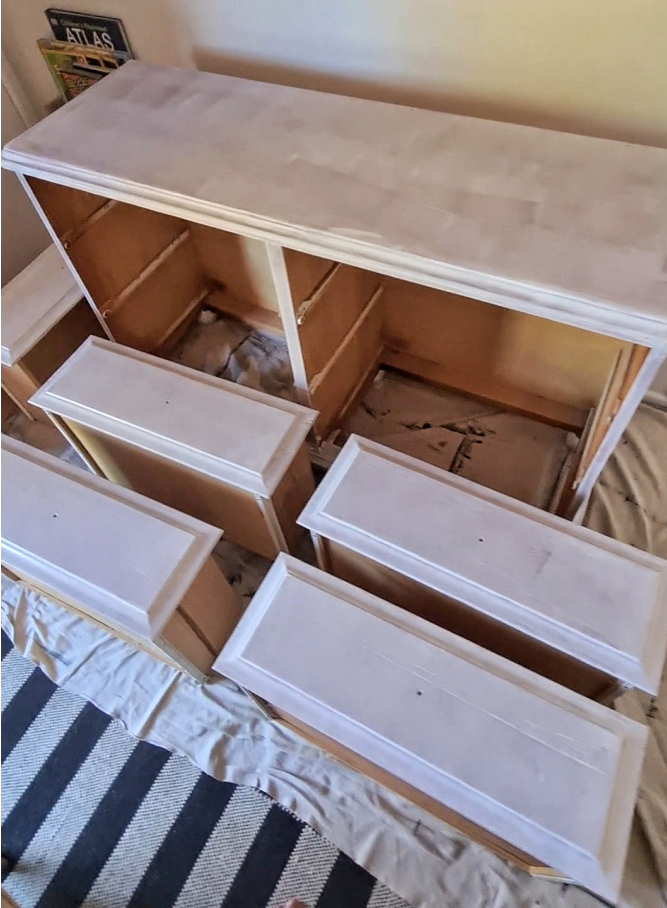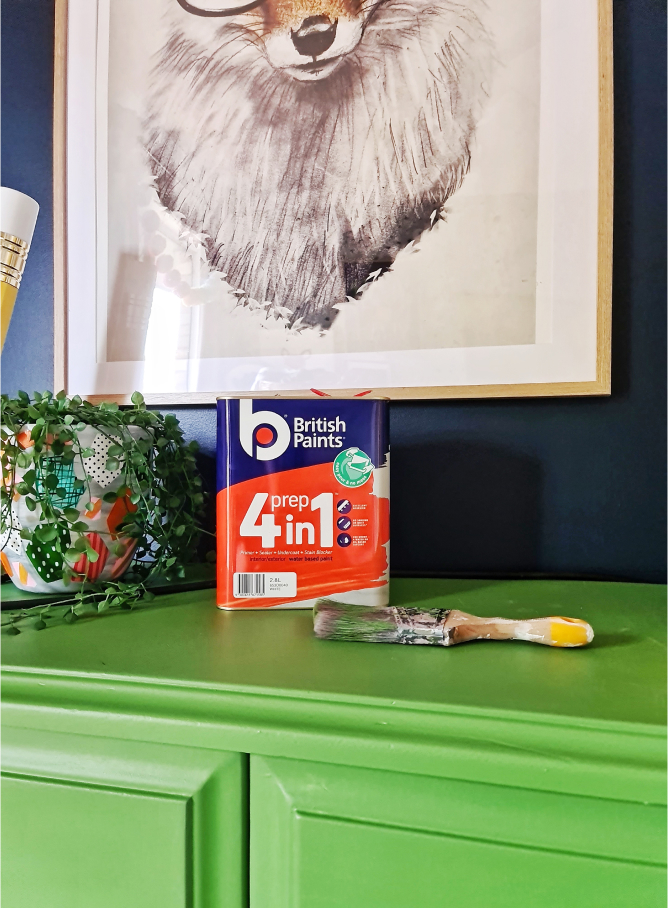Selected colour swatches
You can order up to 20 colour swatchesPrep 4in1.
British Paints Prep 4in1 is now available in an Easy Pour can.
Shake the can, pop the lid for easy pour, no mess prep.
No stirring
Simply shake before you open.
Easy pop lid
No paint can opener required. Easy to open and easy to close, so paint doesn’t dry out.
Easy to pour
No drips for mess-free results.
Excellent for small projects and repairs
You can use a small amount of paint with no mess.
Pop. Pour. Perfect.
Update a chest of drawers
A lick of paint and new hardware makes for a whole new piece of furniture!


You’ve probably seen furniture upcycling projects using paint on your social media feeds – but if you haven’t felt confident enough to give it a go yourself, this might just be the sign you’re looking for that it’s time to pick up a brush (or a roller)!
The best part is, even if you make a mistake with paint, it’s really easy to fix it!
Brandi Love from The Hectic Eclectic had an old pine chest of drawers with the classic yellowed varnish that she wanted to make over, so we asked her to take us through the steps.
“This side of the room has been on my to-do list for a while and I'd been searching high and low for a lowboy dresser that I could paint in a fun and vibrant colour,” she says.
Use the British Paints Paint Calculator to work out exactly the right quantity of paint you’ll need to buy. This will also depend on your painting surface, also known as a substrate. Eg if you’re painting over a darker wood you may need to do extra coats.
The very first thing you need to know about revamping old wooden furniture with paint is that the surface needs to be ready. That’s where sandpaper comes in – you’ll need to get all the old paint, varnish and grime off.
Use rougher sandpaper – 120 grit – on the first pass, and Brandi recommends using a sanding block as well if you don’t have an electric sander.
“I used my orbital sander with a 120 grit sandpaper on the flat surfaces and then a sanding block with 120 grit sandpaper in the corners and edges,” Brandi explains.
Remember to sand lightly – there’s no need to dig in hard. After you’ve gone over the whole piece with 120 grit, have another pass over it with 240 to 320 grit sandpaper.
Now, wipe off all the sanding dust and any other dirt and grime that may be hanging around.
“I used a mix of methylated spirits and water to give it a good clean,” Brandi says.

Brandi used our best-selling Prep4In1 prep coat – it acts as a sealer, primer, undercoat and stain-blocker all in one product.
Best of all, it’s now available in our brand-new ‘EasyPour’ cans, eliminating the need to stir, and minimising wastage.


This is when you’ll also need to choose the right applicator. Brandi opted to use a roller for the larger areas, combined with a cutting-in brush.
“For rollers I used a 100mm high density foam roller and Monarch 38mm cutting in and framing brush to paint around the tricky parts.
You’ve prepped, you’ve primed and you’ve chosen your colour – it’s time to start painting!
Pour about a cup of paint into your roller tray, then grab your roller and get it good and saturated with paint so that when you start rolling you’re not having to press down tightly to squeeze the liquid onto your painting surface.
Now, start rolling!


"I love how it's turned out!” Brandi says.
“This was the perfect colour and actually matches perfectly with his green pillowcases, so it's as though the colour was made for this room!”


